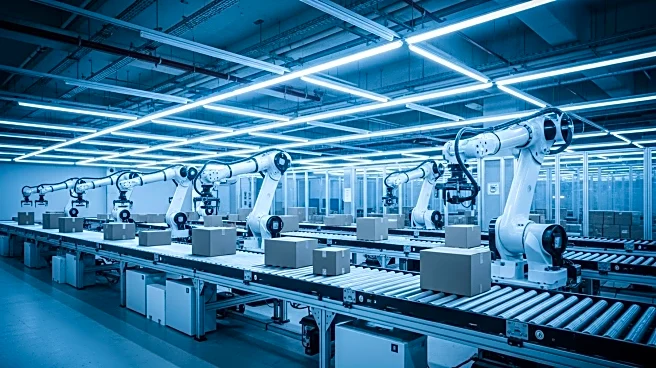What is the story about?
What's Happening?
Supply chain network design is a strategic approach to establishing efficient supply chains, taking into account various factors such as manufacturing locations, product quality, and cost-effectiveness. This method involves a systematic approach to decision-making, incorporating data-driven insights and human observations of economic, political, and social landscapes. Key elements of supply chain network design include procurement, manufacturing, warehousing, and service levels. Businesses must balance these factors to align with their goals, such as minimizing costs or enhancing service quality. The design process also considers transportation costs, inventory management, lead times, regulatory compliance, and the broader economic and political climate. Companies like SOMOS Foods exemplify this approach by analyzing global markets and adapting to changes in tariffs and other external factors.
Why It's Important?
The significance of supply chain network design lies in its ability to enhance operational efficiency and resilience. By optimizing supply chains, businesses can reduce costs, improve customer satisfaction, and adapt to changing market conditions. This approach is crucial for maintaining competitiveness, especially in industries heavily reliant on international trade and logistics. Efficient supply chain design can lead to cost savings, faster lead times, and improved service levels, benefiting both businesses and consumers. Additionally, incorporating sustainability and social responsibility into supply chain design can align with consumer values and enhance brand reputation. As global markets become increasingly interconnected, the ability to quickly adapt to disruptions, such as natural disasters or political changes, becomes a critical advantage.
What's Next?
Businesses are expected to continue refining their supply chain network designs to address emerging challenges and opportunities. This includes leveraging advanced technologies like AI, blockchain, and digital twins to enhance decision-making and scenario planning. Companies will likely focus on building more agile and resilient supply chains, capable of withstanding disruptions and adapting to new regulations or market demands. As consumer expectations evolve, businesses may also prioritize sustainability and ethical sourcing in their supply chain strategies. Ongoing monitoring and improvement of supply chain networks will be essential to maintaining efficiency and competitiveness in a dynamic global market.
Beyond the Headlines
The deeper implications of supply chain network design extend to ethical and environmental considerations. As businesses strive to meet consumer demands for transparency and sustainability, supply chain design becomes a tool for promoting ethical practices and reducing environmental impact. This shift could lead to broader industry changes, encouraging more companies to adopt sustainable practices and invest in technologies that support environmental goals. Additionally, the focus on resilience and agility in supply chain design may drive innovation in logistics and transportation, leading to more efficient and sustainable supply chain solutions.
AI Generated Content
Do you find this article useful?













